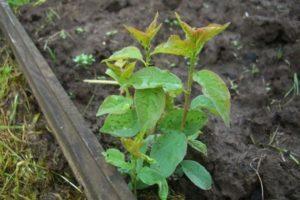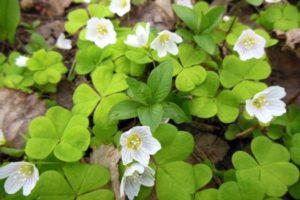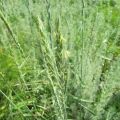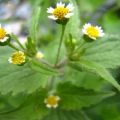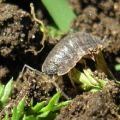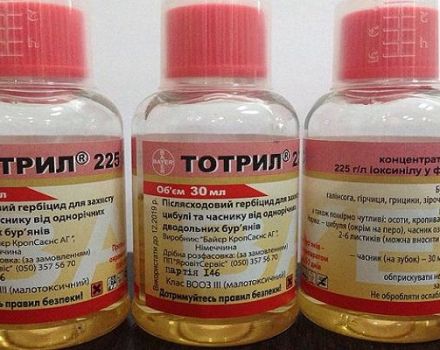How to get rid of wheatgrass, a description of the best herbicides and weed control measures
Wheatgrass is well known to any gardener. He is ubiquitous, the fight against him is carried out in the beds with vegetables, berries, flower beds. It seems that there is no limit to the vitality of the weed, aggressiveness and ability to spread, and only a special herbicide against harmful wheatgrass can stop it. Along with such a cardinal remedy, there are other methods and techniques to get rid of a malicious weed.
What does creeping wheatgrass look like?
The weed belongs to cereals and has a long-term development cycle. The height of the plant stems is from 40 cm to 150 cm. Its leaves are glabrous, linear, about 30 cm long, up to 1 cm wide. Above the plant stem, they become narrower (2-8 mm).
Rhizomes are flexible, long, creeping, located horizontally in the soil, at a depth of 15 cm. The flowers of the weed are collected in spikelets. Their length is 2 cm, width - 0.7 cm. An ear is made of spikelets, the height of which reaches 30 cm. Flowering can be observed in June-July.
Why is a weed dangerous?
All weeds are extremely tenacious, but creeping wheatgrass is in one of the first places in terms of malignancy and aggressiveness.
The filamentous rhizomes are never at rest. Even after a little damage, the buds of the weed start to grow. Moving horizontally in the soil, the roots gradually branch out, rise above the surface and give rise to a new plant.
In the second half of June, the rhizomes change their direction of growth, move vertically downward, thicken, form small tubers for wintering.
The danger of weeds is the difficulty of fighting them. The length of the rhizomes can reach hundreds of kilometers over an area of 1 hectare and have 250 million buds, which are potential wheatgrass plants. On plowing, they lie at a depth of about 12 cm, on dense soil - 5 cm. Their growth force is very high, the roots can penetrate potatoes, boards and other obstacles.
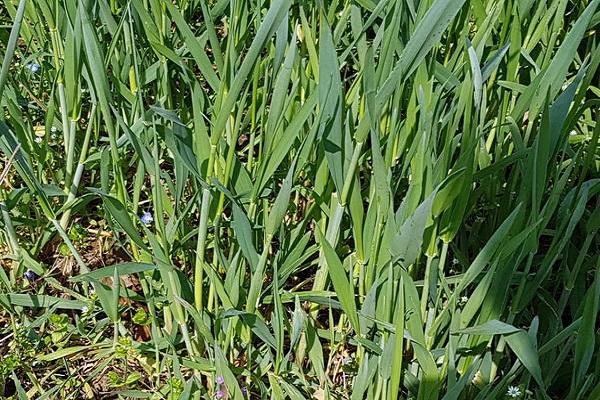
Control measures
Weed control measures should be systemic in nature and should not be isolated operations, but a whole range of control methods.
Agrotechnical methods of weed control are considered the safest.
Herbicides are used only as a last resort, when other methods do not achieve the goal.
The main methods of maintaining the cleanliness of crops from creeping wheat grass include:
- tillage;
- suppression by cultivated plants;
- crop rotation;
- mulching;
- the use of green manure and other agricultural techniques.
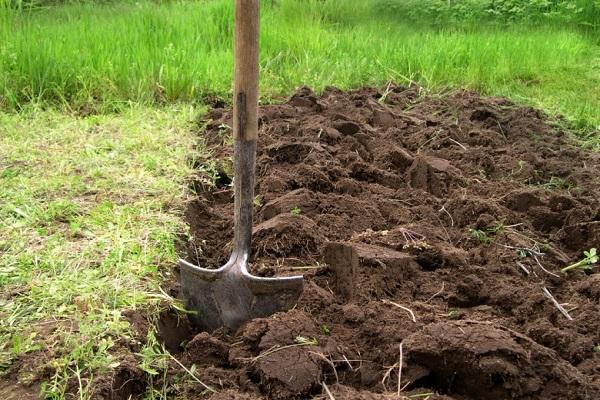
Using herbicides
Chemical preparations (herbicides) are able to effectively control weeds and destroy up to 95% of plants.Before using a pesticide, a drug is selected taking into account a number of criteria:
- on what principle the herbicide "works" - selective or continuous;
- the method of drug penetration into the plant;
- spectrum of influence - universal or anti-cereal;
- type of culture to be protected and its response to a chemical.

Electoral
To destroy creeping wheatgrass, graminicides are used - selective herbicides on broadleaf crops. The preparation "Quickstep", belonging to this group, is used for planting flax, rapeseed, sugar beet.
In vineyards, the weed is exterminated with the help of selective herbicides - "Naboo", "Fuzilad super". Other cultures use Zellek, Targa, Titus. They are used strictly according to the instructions, taking into account the specific type of processed plants.
Manufacturers of drugs warn that they are used once every 3 years. The effectiveness of such chemicals is about 80% and is inferior to continuous herbicides, since wheatgrass rhizomes are not completely destroyed.
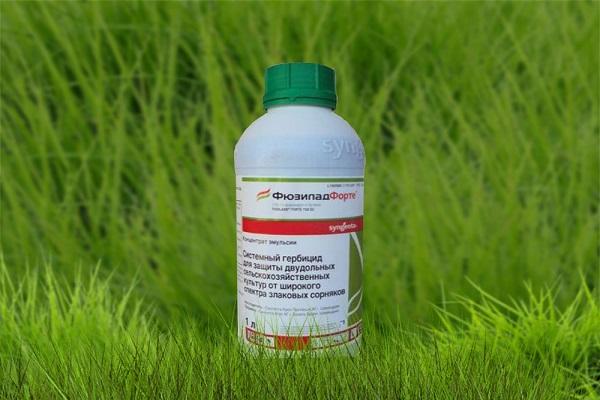
Continuous action
These herbicides are based on glyphosate. It is effective throughout the entire growing season of the weed. The use of the drug in fields and gardens can be 3 weeks before sowing, planting cultivated plants or 2 weeks after harvesting.
The most effective herbicides include:
- "Helios" is an analogue of Roundup; other dicamba-based herbicides are added for greater efficiency.
- Neutrin BT, similar to Miura herbicide, has an affordable price.
- "Maytus" is used in corn crops.
- Metrizan is used for potatoes and soybeans.
- "Basis" - a herbicide inhibits wheatgrass shoots on corn and other crops.
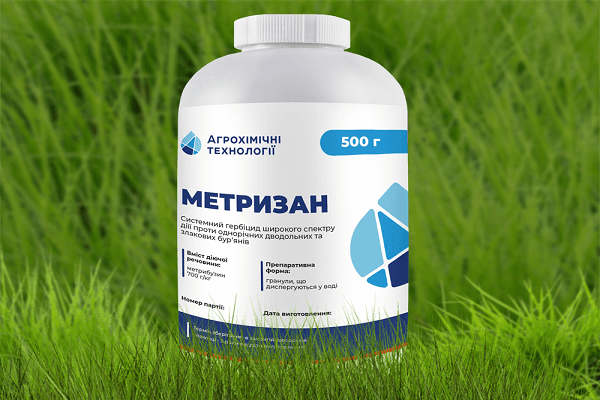
Organic farming methods
Recently, organic farming techniques have become increasingly popular among gardeners. Thanks to them, the site is cleared of wheatgrass without chemicals and without disturbing the natural balance.
EM drugs
Unlike aggressive herbicides, EM formulations do not adversely affect the soil. The product contains effective microorganisms (EM) that penetrate the soil and eat unwanted organic elements (weeds). Roots die as a result of the fermentation process caused by EO. For processing soil affected by creeping wheatgrass, the following preparations are suitable:
- Renaissance;
- "Radiance";
- Amix;
- EM molasses;
- Baikal EM-1;
- "Tanir Forte".
The effectiveness of use is not one hundred percent, as after the herbicide, so the method is used in combination with other methods.

Soil mulching
It is easy to get rid of the rhizomes of creeping wheatgrass by mulching the soil. Its layer (hay, grass, sawdust) should be at least 30 cm. Moisture is retained under the mulch, earthworms are activated, and soil fertility is improved. The plant tries to get out of the soil, the rhizomes rise higher and are located in the mulch. At this moment, pulling it completely out of the ground is not difficult.
Siderata
By sowing and mowing some plants in the flowering phase, they achieve not only an improvement in the condition of the soil, but also the destruction of weeds, in particular wheatgrass. Such crops are called siderates.
To achieve the goal, the land is cultivated or dug up on half a shovel bayonet, sown with rye or oats. After a month and a half, the plants reach 15-20 cm, they are cut, and the ground is cultivated again. The plot is sown again. After repeating the procedure three times, the malicious weed disappears completely.

Agrotechnical techniques
These methods are most effective for personal subsidiary plots and allow you to get rid of creeping wheatgrass in small areas.
Receptions require a lot of hard work and patience.
Picking roots
The method is quite laborious, it is required to carefully select the roots from the ground, digging with a pitchfork and trying not to leave a single piece of the plant in the soil. It takes a lot of effort, but it is almost impossible to achieve complete purity of the soil from rhizomes.
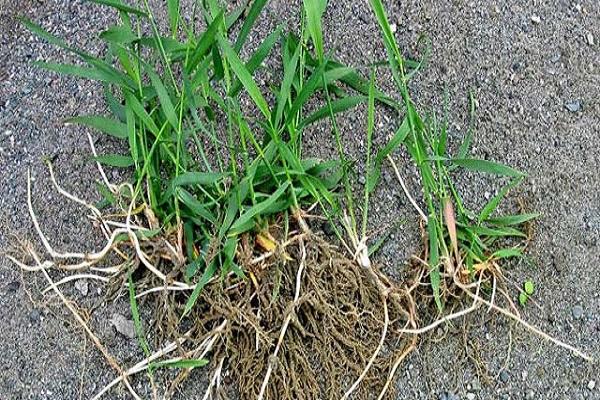
Blackout
If large areas of the garden are inhabited by creeping wheatgrass, it is destroyed by blocking the light with a black film. It is spread over the soil surface, covered with hay or straw from above and left in this state for the whole summer.
Darkening can be done in a more complex way:
- Cover the weeds with cardboard sheets.
- Sprinkle a layer of mulch on top.
- Place fertile soil on it, forming a bed.
- Strengthen it on the sides with stones.
- Sow the necessary vegetables on the ridge.
Chopping roots
The method consists in the fact that the roots of wheatgrass are very much crushed using a motor-cultivator, after plowing to a depth of no more than 20 cm.
The dormant buds are stimulated to germinate, give roots, and the plants emerge above the surface. In this state, they can be easily pulled out of the soil using special tools or by hand.

Folk remedies and recipes
In addition to mechanical folk methods for the destruction of creeping wheatgrass, there are chemical ones. Household substances known to all are used as preparations for treatment, which, perhaps, are less effective than herbicides, but the harm from them is minimal.
Ethanol
The method is considered effective and easy to use. Alcohol is diluted with water ten times and the soil between the plants is cultivated. The fluid consumption is 5 liters per 1 hundred square meters. According to reviews, the method relieves the site of weeds for 1 year.
Lemon acid
Plain citric acid (3 tablespoons) is diluted in 1 liter of water and treated with creeping wheatgrass. The weed dies faster if spraying is carried out in clear sunny weather.

Prevention of the appearance of wheatgrass on the site
In order not to allow wheatgrass to occupy the entire sown area, it is necessary to carry out preventive measures:
- periodic mulching of beds with grass, straw;
- constant weeding;
- crop rotation;
- the use of green manure;
- drip irrigation;
- protection of row spacings with black foil.
